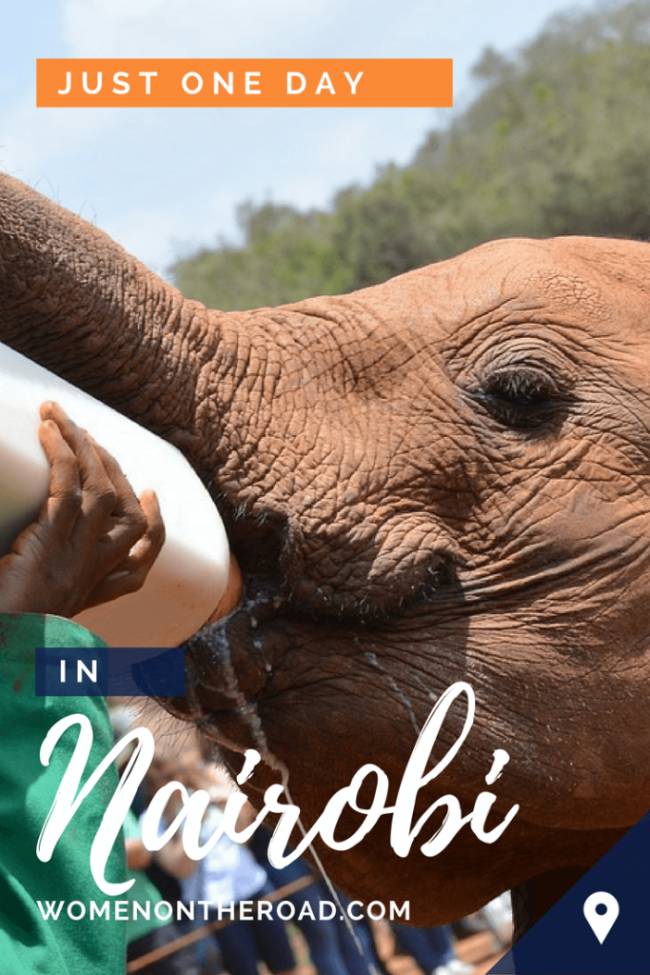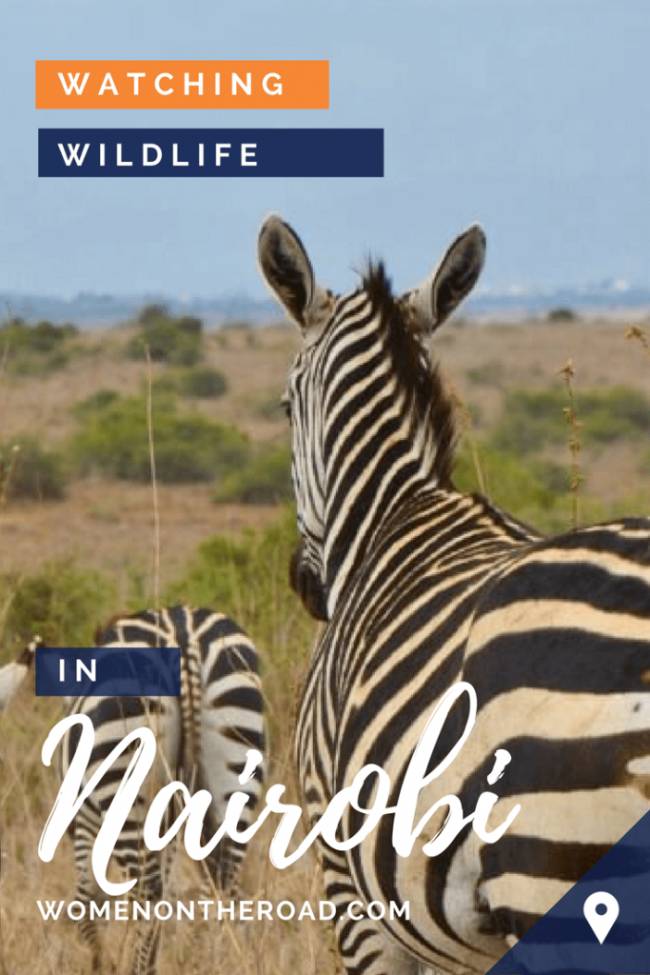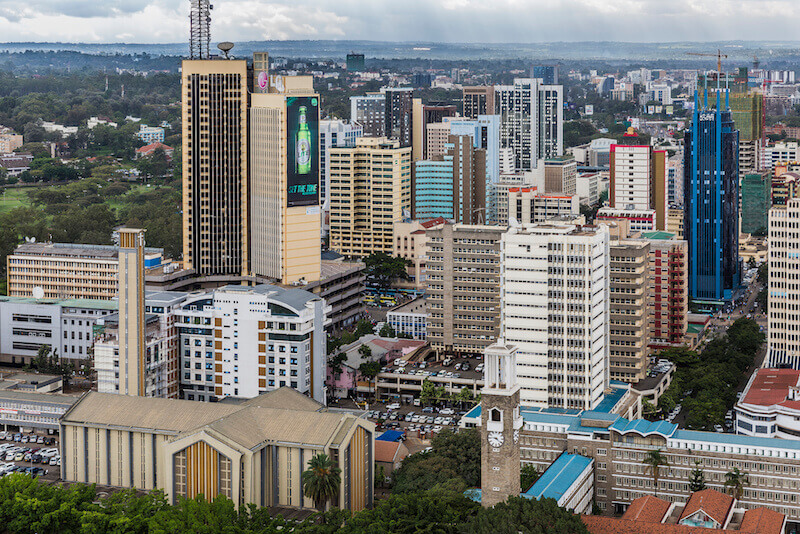Three things strike me when I arrive in Nairobi.
First, the hustle, as in business and huge billboards and a heart of commerce. I’m also struck by the traffic and rust-colored dust, making breathing difficult.
And there’s no escaping the chasm between wealth and poverty, between the manicured lawns of Karen and Muthaiga and, a world away, the rutted tracks and refuse of Mathare and Kibera, the city’s two largest slums.
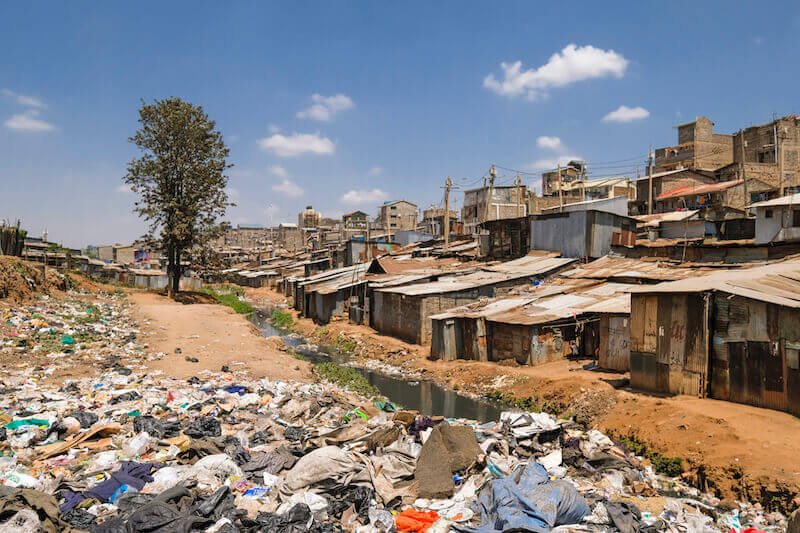
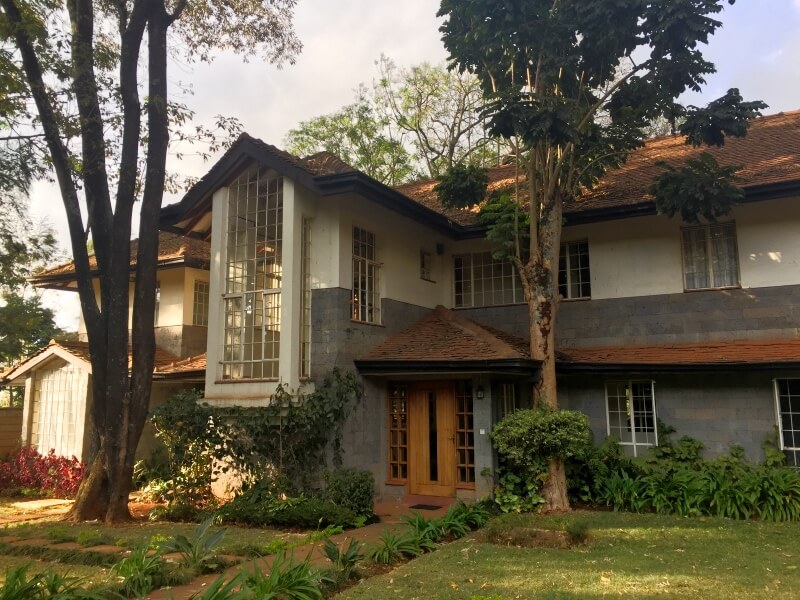
Wealth disparity isn’t Nairobi’s only contradiction. Visually, the city is unusual: a huge national park sits in its heart. Along its edge, residents and workers ensconced in the skyscrapers are impervious to the giraffes feeding on acacia trees or the lionesses prancing around with their cubs.
You won’t find another national park like it in Africa.
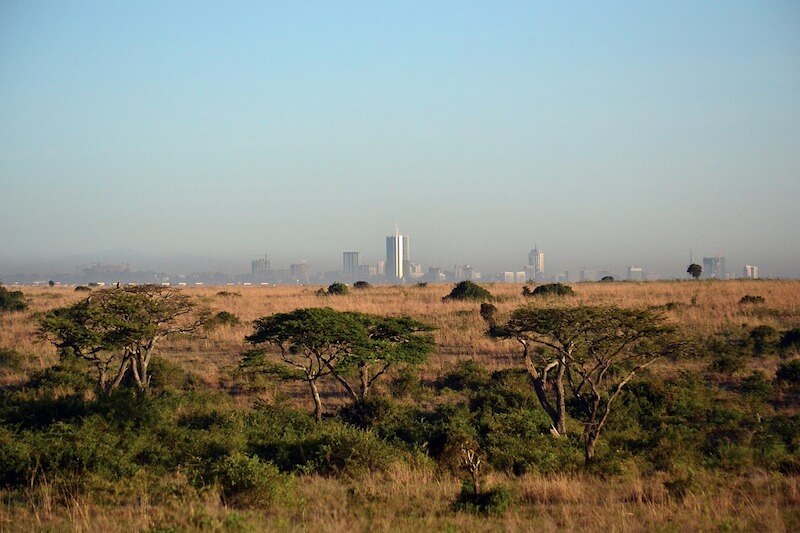
This wasn’t my first visit to Nairobi and in past, I’ve had mixed feelings about this city.
I once spent an entire month here and concluded I’d probably not willingly return.
Children begging under bridges, filth in the streets, petty theft… I had been in Africa six months without incident and all it took was an hour in Nairobi before experiencing my first scam.
So when I found out I was returning recently, I didn’t jump for joy.
Still, every place deserves a second chance, and this was Nairobi’s turn.
An immediately noticeable difference from my last visit is the city’s cleanliness. Nowhere near pristine, mind you, but the heaps of garbage that once littered the center of town have receded to the city’s poorer neighborhoods. I remember thinking of Nairobi as a seething urban blight; I was now looking at a classy continental city, one where disparity, diversity, laughter, political frenzy and constant movement rub elbows.
While the street stalls remain, they coexist with block after block of extravagant shopping malls stuffed with great foods and grocers and brand-name clothing – a Nairobi that surprises me with contrasting feelings of familiarity and newness. (Shopping malls, sadly, have occasionally become terrorist targets so it is wise to be attentive.)
It is by no means an ideal city.
Abject poverty is impossible to miss and you still have to drive with your car doors locked to stay safe, but somewhere along the line Nairobi transitioned and is fighting to come into its own.
Look beyond the city’s perpetually clogged streets, its exhaust fumes and the pervading sense of insecurity and you’ll find stylish eateries, brilliant vegetation and a sense of humor unequalled in the rest of Africa, possibly the world. Now if only the corruption, land grabbing, inequality and violent elections could disappear…
But first, is Kenya safe to travel to?
“Is it safe to travel to Kenya at the moment?”
Well, it depends on the moment, but Nairobi is no stranger to violence so this is a valid concern.
Last time I visited Nairobi, I arrived in town after the Supreme Court had invalidated the 2017 elections, forcing a rerun and angering many supporters. Demonstrations took place every few days, and too many Kenyans recalled what often happened after violence – in 1992, 1997, 2007… so it could happen again. A calm election in Kenya is a rare one.
More recently, terrorism has struck again. Kenya is often the target of Al-Shabaab, the Somali terrorist group that regularly preys upon its southern neighbor.
In 2013 terrorists attacked the Westgate Shopping Mall, killing nearly 70 people and prompting high security at all malls – car searches are now the norm. Two years later the terrorists killed 150 students at Garissa University, and there have been occasional attacks along the coast. And most recently, on January 15 this year, 21 people were killed in an attack on the Dusit hotel complex.
So yes, there are occasional attacks, but to put it into perspective, some 12,000 Kenyans die each year in road accidents.
If you check any Kenya travel advisory or official warning, here’s what you’ll read:
- stay away from border areas near Somalia
- be aware that there are risks of terrorism throughout the country
- know that terrorists have targeted everything from malls to universities and are unpredictable
- the possibility of carjackings and violent crime means you should keep your car doors locked at all times
- monitor local news before going into the countryside
As a solo woman, I felt safe enough around Nairobi, but I did take precautions. I used a recommended driver and stayed at guesthouses and hotels that were also recommended. I also went out at night on my own, although I made sure I had a familiar taxi waiting for me. Most houses and buildings have security and locked gates and once you’re inside, there’s no reason to feel afraid.
I was careful with my belongings, avoiding a backpack because I couldn’t monitor anything happening behind me (and my pack doesn’t lock). Instead, I carried an anti-theft bag during my visit (this one).
So yes, I’d be cautious in Nairobi, but I wouldn’t let fear ruin my Kenya vacation.
Best things to do in Nairobi, Kenya: my 3 essential places to visit in Nairobi
When it came down to what to do in Nairobi, I had a single sightseeing goal: see wildlife, for which Kenya is so famous.
With a heavy work schedule, I only had one day in Nairobi and in that day, I was transported straight to the savanna.
Here’s how I did it.
1. I started with Nairobi National Park
Kenya is home to the major mammals that roamed the earth millennia ago.
While a safari to the Maasai Mara is an unforgettable experience – I know this from earlier trips – half a day in Nairobi National Park is the absolute next best experience. You can easily forget you’re in the city and the wildlife viewing experience will be memorable, especially if you’ve never been on a wildlife safari.
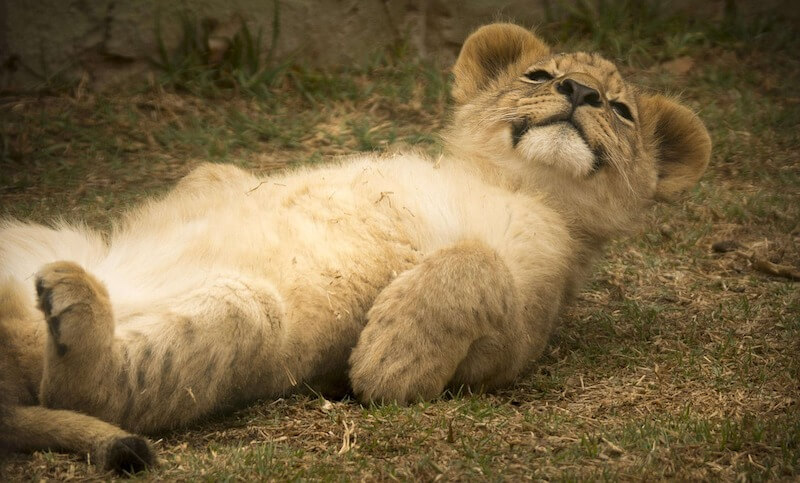
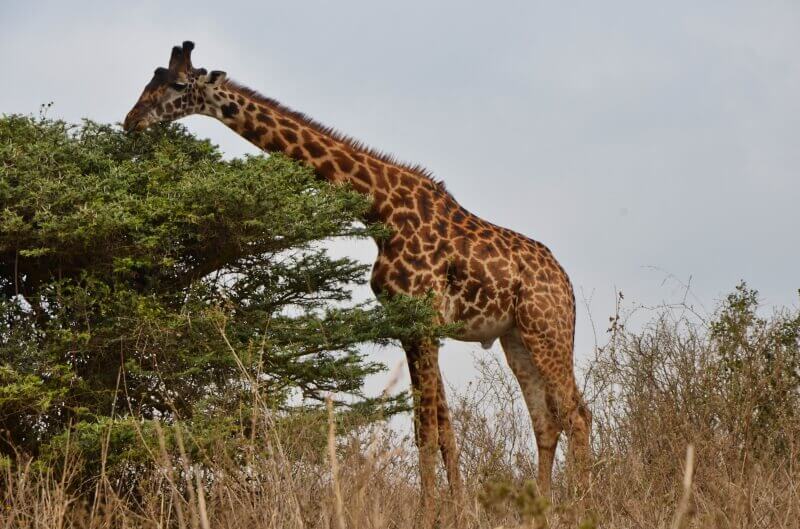

I had imagined a compact, protected zone with scattered monkeys and the occasional giraffe staring off into the distance.
I was terribly wrong.
The park is immense, its 117.21 square kilometers (28,963 acres) stretching into the horizon from the edge of the city.
As for the few monkeys – yes, I saw them.
And the giraffes. And the hippos, and crocodiles, and two lionesses playing with their cubs. In the distance, a rhinoceros or two, their path crossed by a herd of nonchalant zebras. Ostriches, impalas, gazelles. Almost everything other than the elephant lives here.
The park isn’t fenced, although there is a gate. Warthogs and monkeys have no trouble getting out and I saw them wandering around the streets near the park. Drivers are only mildly surprised – they reserve real shock for the occasional lion who accidentally leaves the park and heads towards town before being promptly returned home.
2. David Sheldrick Wildlife Trust
There are great reviews about this elephant and rhinoceros orphanage – and rightly so.
Yes, it’s a bit showy and crowded, but little can equal the sight of baby elephants, some only weeks old, strutting their stuff across the mud and making a beeline for their pre-filled milk bottles. Even the youngest among them exhibit plenty of character, clamoring for a second helping.
The elephants are all rescues, found after their mothers had died, sometimes of natural causes but mostly at the hands of poachers who sell tusks for ivory to wealthy Asian buyers. The orphaned calves are captured and transported to the Trust, where they are watched around the clock. It may take years to rehabilitate an elephant and prepare it for release into the wild, but the Trust is often their only hope for survival.
So once you’re finished in Nairobi National Park, do go see the feeding of the baby elephants and let your money help their survival. You won’t be able to take your eyes off them.
This is also a rhino orphanage but I saw none that day…
A few tips…
- Make sure you check the schedules because feeding times are strict
- Get there early because it’s crowded
- Stand near the rope and one of the babies might actually reach out and touch you
- Head for one of the edges – it won’t be as crowded
- Try to read up before you go because the commentary by the staff – which is an important part of the experience – isn’t clear or loud enough.
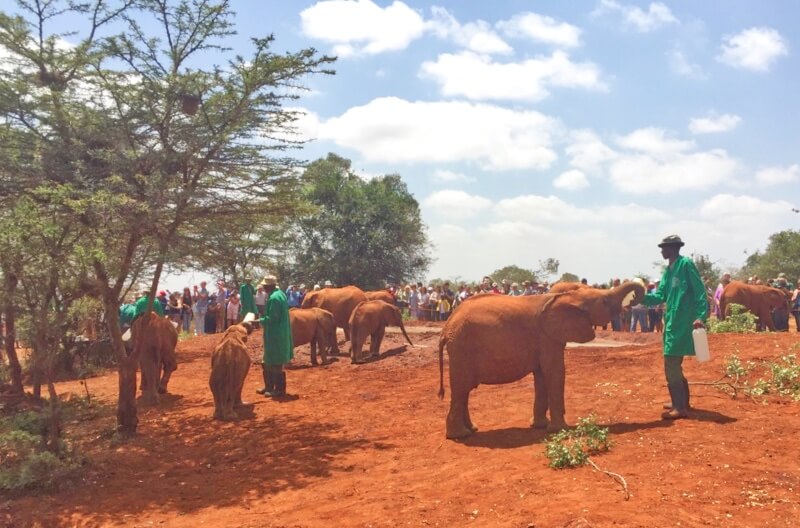
3. AFEW Giraffe Centre
This should be the final stop of your Nairobi wildlife trifecta.
Some people consider this attraction a bit touristy – and it is – but I thoroughly enjoyed my visit.
What’s not to enjoy about being kissed by a giraffe? It’s rare to be able to get this close to these wonderful creatures and this might be your one and only chance to look one in the eye.
This is basically an education center where Kenyan schoolchildren come to learn about wildlife and environmental sustainability. Giraffes are bred in captivity; the center was started to help the endangered Rothschild giraffe and release it into the wild, into a suitable habitat of course.

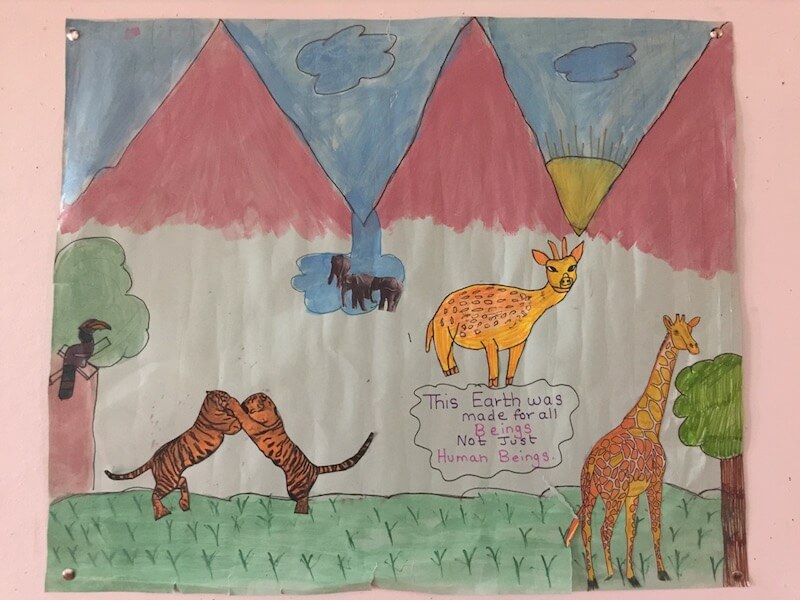
The slums of Nairobi
Wildlife is a glorious side of Nairobi, but the city has other sides.
Some three million people live in the city, more than half of them in slums or insalubrious informal settlements that usually lack even the basics, such as running water or electricity. There is plenty of discussion about slum tourism, with a number of pros and cons about touring around for a few hours in these neighborhoods.
I spent half a day in Mathare for work, documenting human rights issues as a journalist. I went in with members of a local grassroots charity with a specific purpose. I was glad I did because I needed to see how people lived in order to write about them. But I won’t be writing about individuals, nor will I be documenting their faces or poverty or taking selfies among the rubble.
I have indulged in slum tourism – I once visited Soweto on a tour in South Africa and the experience touched me deeply. It’s a loaded issue and both sides have interesting arguments.
So it’s up to you but please, weigh your decision carefully. Using other people’s lives as your tourist backdrop should be something you think through – it’s not innocuous.
The many Nairobi attractions I didn’t visit
I had so little time to myself in Nairobi I sadly didn’t visit a number of places on my list.
With more time, I might have gone to the Railway Museum, given my addiction to trains; to the Nairobi National Museum to better understand Kenya’s position as the “cradle of mankind”; and one of the Maasai markets, which shift daily and carry handicrafts from beyond Nairobi (if you’re not a bargainer, try honing your haggling skills first).
Kenya holidays: beaches and other tourist destinations in Kenya
Before flying to Nairobi I had landed in Mombasa as I had work to do along the coast.
Not one to bypass pleasure when it makes itself available, I stayed in one of the many resorts on the road between Mombasa and Malindi, the Sarova Whitesands. A few western tourists mingled with Indians and Chinese, for whom this region is becoming increasingly popular, but the threat of terrorism along the northern part of the coast is keeping many tourists away and sadly pushing Kenya’s visitor numbers down.
Long white sandy beaches, glorious sunrises and sunsets, palm fronds swaying in a gentle breeze – the perfect postcard. I may have been working but for a few hours, I pretended I was on holiday. I tapped on my laptop as the sea air swept by, feeling incredibly lucky to be right here, right now.
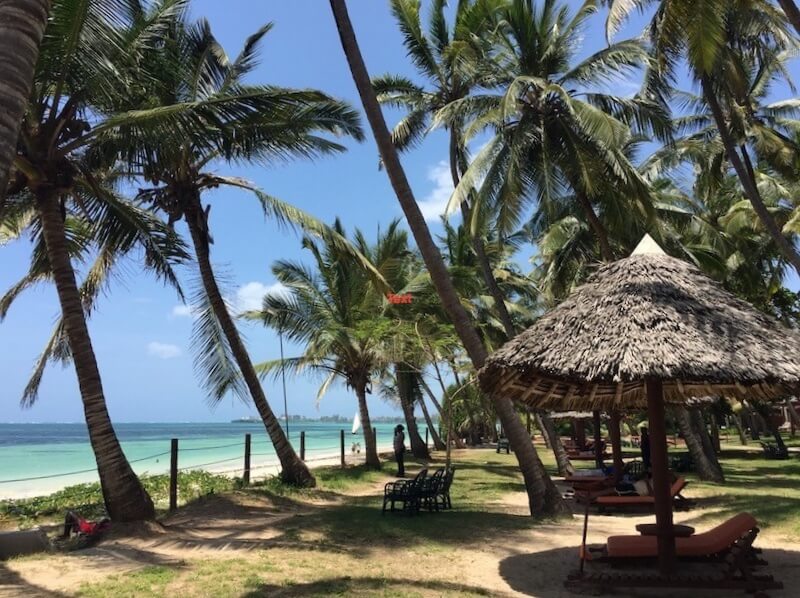
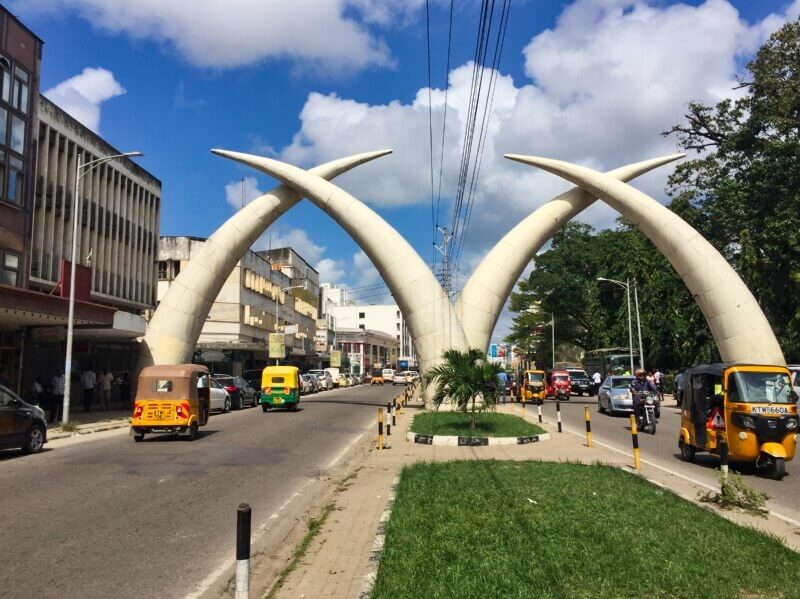
Headed to Kenya? Don’t forget your travel insurance before you go! I use World Nomads whenever I travel. Click here to get a quick personal quote.
Nairobi travel tips and resources (and some general Kenya information)
Getting around Nairobi
You can fly to Kenya through Nairobi or Mombasa with any number of international airlines, and travel within the country with Kenya Airways or several of the newer budget airlines. Many safari companies have their own small aircraft to take you into the bush.
There used to be a wonderful overnight train from Mombasa to Nairobi – wonderful because you’d wake up at dawn and watch the wildlife watching you with curiosity as you tooted by. It has been replaced by a new Chinese-built high-speed train which cuts the overnight journey to five hours. People are saying good things about it.
Your only other transport alternatives are buses and collective taxis, or matatus, which I cannot in any conscience recommend for new visitors (after you’ve been around awhile, do venture on! I crisscrossed Kenya on matatus on previous trips). They’re fast, dangerous, loud – and drivers aren’t always sober, having to stay awake for many hours. The Kenya government has tried to legislate some safety – seat belts, speed regulators, no standing – but Kenyans are imaginative and have found ways around these rules. And if you do try a matatu, you might want to keep your eyes closed as they weave like bullets into oncoming traffic.
In Nairobi, taxis are the way to go. You’ll easily find them at malls and major sights, but I recommend you book taxis ahead of time from a trustworthy source. Your hotel or guesthouse can help, or you can use my own favorite driver, Moses (his contacts are in the resources section below).
Here’s more information on the various Nairobi tourist attractions named above
- Nairobi National Park – organize your own trip or if you have limited time, take a quick tour of the park
- David Sheldrick Wildlife Trust for orphaned elephants and rhinos (click here for a combined tour of the park and the Trust)
- AFEW Giraffe Centre
To know more about the issues covered in this story, visit some of the links below
- Elephant poaching and threats to African elephants
- Given the importance of the environment in Kenya, drop by Ecotourism Kenya for ratings of facilities
- To begin to understand Kenya requires a basic knowledge of its history (here’s a really short version)
- If you’d like to dig deeper into the forces that shape Kenya’s present, the final report of the Truth, Justice and Reconciliation Commission – created to investigate post-electoral violence – makes for interesting reading (you can download it here).
Places to eat and stay in Nairobi
- The most famous restaurant in Nairobi is undoubtedly the Carnivore – absolute paradise for meat lovers!
- When you finish visiting the wildlife, drop by the Matbronze Gallery for the art – and for lunch
- In Mombasa I stayed at the Sarova Whitesands; if you’re heading further up the coast, try the Distant Relatives Ecolodge in Kilifi. I have no recommendations for Nairobi, since the two places I stayed in have since then closed.
- I read several books in preparation for my trip: Going Down River Road by Meja Mwangi (a look at everyday life in a slum); The Honey Guide by Richard Crompton (a whodunnit written by an Englishman but you’d swear he wasn’t!); and White Mischief by James Fox (a classic colonial tale).
- For Kenya information I used the Rough Guide to Kenya
- If you want to explore the countryside and rent a car, click here for some great price.
I promised you my driver’s email – his name is Moses and you can click here to email him!
And even more Nairobi tips!
- A reader recommended Safari Afrika as a reliable African-owned company that offers solo safaris.
- Nairobi has good medical facilities and the best hospital in East Africa, Nairobi Hospital, along with several good private hospitals. That said, I made sure I had travel insurance and the proper vaccinations (yellow fever, and a course of Malarone before arriving). Avoiding malaria and dengue – along with road accidents – will be your major health challenges in Kenya.
- Kenya has a wild and vibrant media scene and you’ll find all the news you need online. Try the Daily Nation or The Standard.
- There’s every chance you’ll need a visa for Kenya. Click here to check.
- I used a Safaricard SIM card, available pretty much anywhere and I never lacked for wifi.
— Originally published on 21 October 2017
PIN THESE PICTURES AND SAVE FOR LATER!

